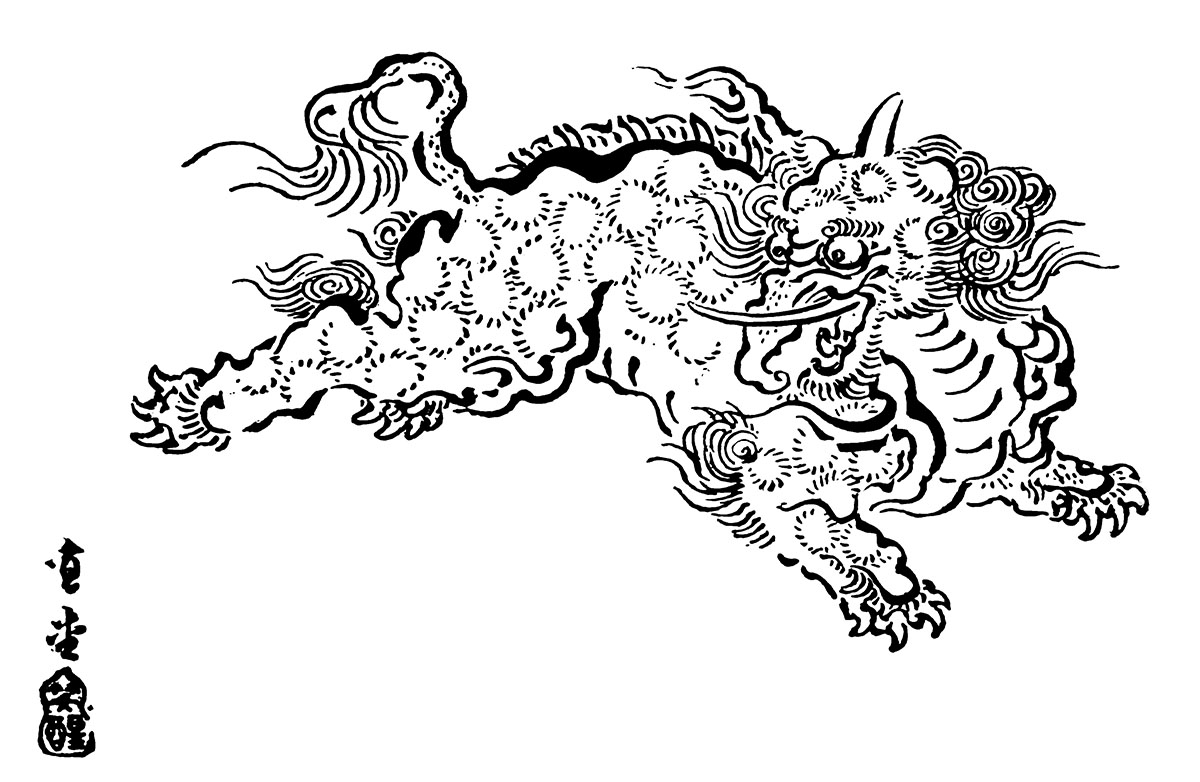Baku: The Dream Eaters of Japan
The legendary "baku" of Japan are a rare sort of monster that actually benefits those humans they haunt; this is because they are believed to eat bad dreams! According to ancient Shinto beliefs, all bad things that humans think, do, and have happen to them ― diseases, accidents, evil urges, etc. ― are caused by evil spirits; and this includes nightmares. There was once a general belief in Japan that if a nightmare was not dealt with quickly, it would become the portent of something very real and very bad. Luckily, baku eat the spirits that cause nightmares to happen, which can prevent the nightmare from ever becoming anything more than a bad dream. The evil spirits that caused the nightmares could be chased away or even destroyed by calling a baku immediately upon waking: “Baku kurae! Baku kurae! Baku kurae! (pronounced “ba-ku ku-rai-eh”... “Baku, come eat! Baku, come eat! Baku, come eat!“).
More useful still, an evil spirit that brings bad dreams might be scared away altogether before causing the nightmare by simply having a picture of a baku nearby, or writing the creature’s name on a pillow; by reminding evil spirits that a baku could be in the area, the spirits were believed to often leave the house entirely alone. This believed effect was considered so powerful and useful that baku are carved onto the pillars and woodwork of many Shinto shrines in Japan as a guardian animal, next to other powerful guardian creatures such as tigers and ryuu ( Japanese "dragons").
While it is not exactly known when the belief in the dream-eating baku began in Japan, illustrations of the monster are known to have been in possession and use of the upper classes in the 14th and 15th Centuries. By the 17th Century the tale of the beast and its image were well-known among the entire population of the country. Countries outside Japan were first really introduced to the concept of the baku in 1902, when popular author Lafcadio Hearn, an American living in Japan with a native wife, released his book Kotto: Being Japanese Curios, With Sundry Cobwebs. It is from Hearn's book that the illustration above comes.
The Baku's Changing Appearance
The baku is conceived of as a spirit beast more than a biological animal, due to its interaction with ephermal dreams... but this didn’t stop people from trying to describe it. The illustrations of the baku from ancient Japan are now believed to be based on a Chinese monster called the “Mo,” descriptions of which seemed to have reached Japan in the 14th Century. The tales of this Chinese beast, a picture of which could ward off evil spirits, seems to have been merged with 7th and 8th Century legends related to a creature called 'Hakki' that was said to be a nightmare eater. I know of no illustrations of the 'Hakki'... and the illustrations that now exist of the baku closely resemble the older illustrations of the Chinese "Mo."
In his book, Lafcadio Hearn stated that the baku was "variously represented and described." Hearn quoted a description from an ancient book in his collection which stated male baku had “the body of a horse, the face of a lion, the trunk and tusks of an elephant, the forelock of a rhinoceros, the tail of a cow, and the feet of a tiger.” Hearn, however, also confused the matter a bit by assuming another illustration he had run into -- entitled "Hakutaku" -- was also another depiction of a baku... but it seems likely now that this second illustration, showing a large grazing animal with eyes on its sides, represents a different legendary monster altogether.

The Hakutaku from Hearn's Book [Larger version here]
Most modern images of the baku stem from the initial illustration given in Hearn's book (at the top of this article), and all modern representations now feature the short elephant-like trunk. This seems to be a holdover from Chinese illustrations of the "Mo," many of which were actually based on the Malaysian tapir, an animal that has a similar snout. As a matter of fact, the Japanese word 'baku' is used both to name the dream-eating monster and as the Japanese name for tapirs in general... which has since led to a common sight-gag in Japanese comics showing a tapir eating a person's dream.
Anomalies -- the Strange & Unexplained, as well as my other website -- Monsters Here & There -- are supported by patrons, people like you! All new Anomalies articles are now posted for my patrons only, along with exclusive content made just for them. You can become a patron for just $1 a month!
|









